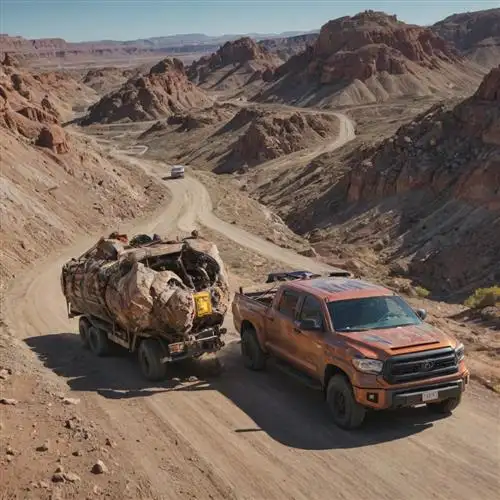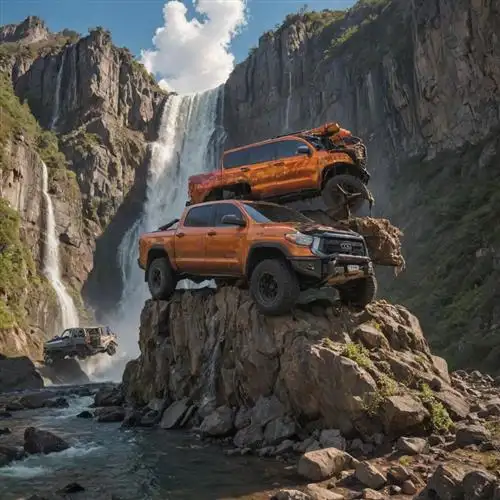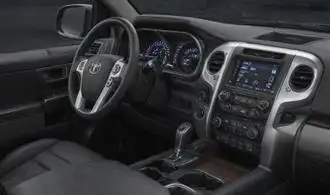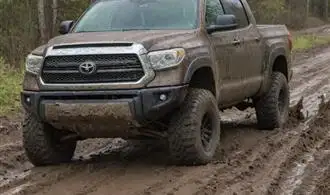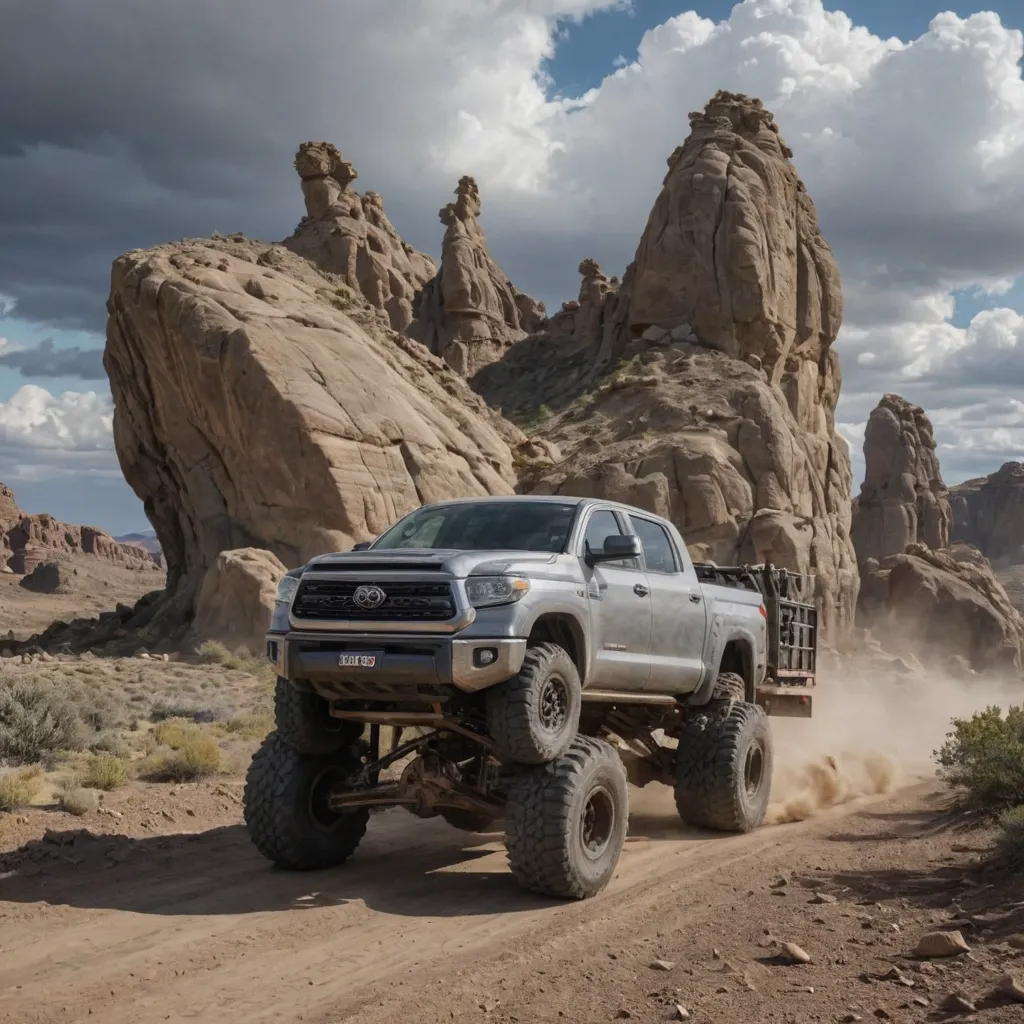
Understanding Tundra Towing Capacity
The Toyota Tundra is renowned for its impressive towing capabilities, making it a popular choice for those who need to haul heavy loads. However, it's crucial for Tundra owners to understand the nuances of their vehicle's towing capacity to ensure safe and efficient towing. Towing capacity refers to the maximum weight that a vehicle can safely tow, including the weight of the trailer, cargo, and passengers.
The Tundra's towing capacity can vary depending on several factors, such as the model year, engine size, and drivetrain configuration. Generally, the Tundra's towing capacity ranges from 8,300 pounds to 10,200 pounds, with the higher-end models offering the greater towing capabilities. It's important to consult your owner's manual or the information provided on the driver's side door jamb sticker to determine the exact towing capacity for your Tundra.
When it comes to towing, it's essential to understand the difference between the Tundra's payload capacity and towing capacity. Payload capacity refers to the maximum weight the Tundra can carry inside the vehicle, including passengers and cargo, while towing capacity is the maximum weight the Tundra can safely tow behind it. Exceeding either of these limits can result in dangerous driving conditions and potentially cause damage to your vehicle.
- Always stay within the recommended towing capacity. Overloading your Tundra can compromise its handling, braking, and stability, putting you and other drivers at risk.
- Properly distribute the weight of your trailer and cargo to maintain the appropriate weight balance. This helps to ensure better control and stability while towing.
- Equip your Tundra with the necessary towing accessories, such as a hitch, trailer brakes, and towing mirrors, to enhance safety and visibility.
- Adjust your driving style when towing, allowing for longer braking distances, wider turns, and slower acceleration and deceleration.
- Regularly inspect your towing equipment, including the hitch, trailer, and tires, to ensure everything is in good working condition.
- Consider the terrain and weather conditions when towing, as they can significantly impact the Tundra's towing performance and stability.
Proper Load Distribution for Towing
When towing with your Toyota Tundra, the distribution of the load is crucial for safe and efficient towing. Improper load distribution can lead to poor handling, increased wear on your vehicle, and even dangerous situations on the road. To ensure your towing experience is smooth and secure, consider the following tips:
Distribute the weight evenly across the trailer. Place heavier items towards the front of the trailer, near the coupler, to maintain the appropriate tongue weight. This helps prevent the trailer from becoming unstable or causing the rear of the Tundra to sag. Aim for a tongue weight that is approximately 10-15% of the total trailer weight.
Balance the load side-to-side as well. Avoid loading more weight on one side, as this can lead to uneven tire wear, handling issues, and potentially dangerous sway. Carefully inspect the trailer before departure to ensure the load is secure and evenly distributed.
Consider the overall weight of your setup. The Tundra has a maximum towing capacity, which varies depending on the model and configuration. Make sure the combined weight of the trailer, cargo, and any passengers does not exceed the Tundra's towing capacity. Exceeding this limit can compromise the vehicle's handling and braking performance.
Use the appropriate hitch and ensure it is properly installed and rated for the weight of your trailer. A properly fitted hitch will help maintain stability and control during towing. Additionally, ensure the trailer's suspension is in good condition and can handle the weight of the load.
Regularly check the tire pressures on both the Tundra and the trailer to maintain optimal handling and stability. Underinflated tires can lead to uneven wear, poor fuel economy, and potentially dangerous situations while towing.
Trailer Braking Systems for Tundra Owners
Towing a trailer with your Toyota Tundra requires careful consideration of the trailer braking system. Proper trailer brakes are essential for safe and controlled towing, especially when navigating steep hills, making sharp turns, or encountering sudden stops. As a Tundra owner, it's crucial to understand the different types of trailer braking systems and how to select the right one for your specific towing needs.
- Electric Brakes: These trailer brakes are powered by an electric control unit installed in the Tundra, which sends a signal to the trailer's brake shoes or discs. Electric brakes provide reliable and responsive braking, making them a popular choice for many Tundra owners.
- Hydraulic Surge Brakes: This system uses the trailer's forward momentum to apply the brakes, making it a simple and self-contained option. However, it may not provide as much braking power as electric or electric-over-hydraulic systems, particularly for heavier trailers.
- Electric-over-Hydraulic Brakes: This hybrid system combines the benefits of electric and hydraulic brakes, providing enhanced braking power and control. The electric control unit in the Tundra activates the trailer's hydraulic brakes, offering a more sophisticated and responsive braking solution.
When selecting a trailer braking system for your Tundra, it's important to consider the weight and size of the trailer, as well as the specific features and requirements of your vehicle. The Towing Essentials Every Toyota Tundra Owner Should Know article provides additional guidance on towing capacity, weight distribution, and other important factors to consider.
Navigating Steep Inclines with a Tundra Trailer
Tackling steep inclines with a Toyota Tundra and a trailer in tow requires a delicate balance of skill, preparation, and caution. The Tundra's impressive towing capacity and off-road capabilities make it a popular choice for those who need to transport heavy loads, but navigating those challenging uphill climbs demands a thoughtful approach.
First and foremost, understanding the weight limits of your Tundra and trailer is crucial. Ensure the combined weight of the vehicle, trailer, and cargo does not exceed the Tundra's maximum towing capacity. Overloading can compromise the truck's handling, braking, and stability, putting you and other drivers at risk. Consult your Tundra's owner's manual or speak with a Toyota dealer to determine the appropriate towing capacity for your specific model.
When approaching a steep incline, maintain a steady speed and avoid sudden acceleration or braking. Gradual, smooth inputs on the throttle and brakes will help you maintain control and prevent the trailer from pushing the Tundra or causing the wheels to spin. Consider engaging the Tundra's four-wheel-drive system, if equipped, to enhance traction and stability on the ascent.
Downshifting the transmission can also be an effective strategy for navigating steep hills. This allows the engine to provide more torque, which can help the Tundra climb without relying solely on the brakes. Be mindful of the transmission's temperature, and avoid prolonged downhill driving in low gears to prevent overheating.
Carefully monitor the Tundra's and trailer's behavior throughout the climb. Watch for any signs of instability, such as swaying or fishtailing. If you encounter these issues, gently slow down and, if necessary, find a safe place to pull over and reassess the situation. Adjusting the trailer's weight distribution or reducing the overall load may be required to regain control.
Additionally, it's important to be aware of your surroundings and any potential hazards, such as narrow roads, sharp turns, or loose surface conditions. Plan your route accordingly and be prepared to make adjustments as needed. Maintaining a safe following distance from other vehicles can also help you react more quickly to any unexpected situations.
Maintaining Stability and Control in Windy Conditions
Towing a heavy load with your Toyota Tundra in windy conditions requires extra caution and skill to ensure the safety of you, your cargo, and other drivers on the road. The Tundra's impressive towing capacity can be challenged by strong gusts, making it crucial to understand how to handle your vehicle and trailer effectively. One of the key factors in maintaining stability is the distribution of weight within the trailer. Ensure the heaviest items are positioned close to the axle, keeping the tongue weight within the manufacturer's recommended range. This balanced load will help the trailer track smoothly and reduce the risk of fishtailing or sway.
Another important consideration is the trailer's aerodynamics. Opt for a streamlined design that minimizes the surface area exposed to the wind. Investing in accessories like skirting or wind deflectors can further enhance the trailer's ability to slice through the air, minimizing the impact of crosswinds. Additionally, proper tire inflation and wheel alignment on both the Tundra and the trailer can significantly improve handling and stability, especially in windy conditions.
Anticipating and responding to sudden gusts is vital when towing in the wind. Maintain a slower, more deliberate pace, allowing ample time to make adjustments as needed. Be prepared to make gentle, gradual steering inputs to counteract the trailer's tendency to wander. In extreme cases, consider finding a safe place to pull over and wait for the wind to subside before continuing your journey. The safety of you and others on the road should always be the top priority.



